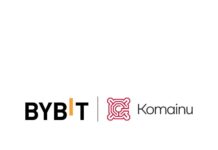
We already know the problem: there are more transactions than the miners can handle. Now the bottleneck with Ethereum has for the first time reached another crypt diet. Particularly with ICOs, as yesterday of status, the network works far above its capacity. In itself, the problem, at least temporarily, would be easy to solve. But the miners stand transversely.
Actually, status is not much more than an ethereum wallet for mobile systems. Bitcoin has been known for a long time. In addition, status should have a messenger and can interact with the Ethereum dapps. Still, the app is not freely available, but reserved in early access mode for bettersters. However, the project has already created an excitement that goes far beyond the Ethereum community.
Like so many Ethereum startups, status has somehow introduced a token into the business model. The Status Genesis tokens have so far been assigned as a bug bounty and, according to the status blog, the community is rewarded to bring the project forward. For what you need it, I was not clear from a fleeting reading of some blog posts of status. Nevertheless, the ICO, the Initial Coin Offering, has set a new record of status yesterday.
ICO are currently generally the racer and can be regarded as the first “killer app” of Ethereum. A startup uses tokens as vouchers for the benefits of its project and sells these tokens to finance the development. Investors can save ICO’s tokens very conveniently in the Ethereum wallet, speculating on the success of startups. ICO is, in other words, a new, unregulated and absurdly successful form of Crowdinvesting, with which like Bancor also like to be taken more than 100 million dollars.
80,000 transactions per hour
As the status yesterday sold the tokens by ICO, the onslaught was so great that there was a record of the transaction volume of Ethereum, if not of cryptic ferries altogether. Had already the BAT ICO blocked with several thousand transactions in half a minute the Ethereum network for hours, Ethereum to the status ICO recorded more than 80,000 transactions per hour. This is likely to be a peak for cryptosciences and would correspond to nearly 2 million transactions a day.
For the Ethereum network yesterday was an official record day. In total, there were 308,000 transactions. This is not as much as the 369,000 transactions that Bitcoin has reached on May 14, but is already close and quite remarkable for such a young crypt diet as Ethereum. However, now the same symptoms of the overload as in Bitcoin are shown: Transactions remain unconfirmed. Yesterday, more than 10,000 transactions had been waiting to find a place in the blocks; Today, there are still more than 4,000.
The Ethereum clients appear to be much worse prepared for insufficient capacity than the Bitcoin nodes. By default, Geth retains only 4,000 unconfirmed transactions in the mempool and parity is only 1,000. This can make transactions simply disappear from the pool of the network. Several exchanges, such as ShapeShift, Bittrex and Poloniex, had to temporarily suspend payments and withdrawals with Ether, whereas other exchanges had angered their customers with waiting times of some more than 24 hours.
Ethereum has thus reached the same level as Bitcoin – it runs over capacity. After Bitcoin has been running the “Blockize Debate” for years, it will be exciting to see how this is going on at Ethereum. Will Ethereum also bury itself in an endless dispute? Or will the developers quickly find a solution and Bitcoin show how the bunny is running?
Bad ICO or bad miner?
The discussion of the network clogging through the ICO status has so far concentrated two main points at Ethereum: on the one hand the ICO itself, which is also referred to as a DoS attack, and on the other hand the Miners, who could handle more transactions.
The format of the ICO is in the Ethereum community increasingly in the criticism. No wonder. So far, it is so that everyone who wants to participate can send transactions with high fees to a certain address as quickly as possible at the beginning of the ICO. This does not only have the disadvantage that a natural selection will take place in favor of large investors who can pay high fees – but also that it creates an unnatural transaction volume. Because the transactions, which do not enter the ICO, still take place. There is simply no value in them. As a result, the network is flooded with transactions that are competing for the tokens, and even if they are lost, the miners have to be confirmed.
The status ICO has, at least, responded to the first criticism. So the developers did not distribute the token immediately, but over time. However, this has, as noted in advance, had the effect of re-sending people over and over again in the course of several hours: “A very good way to perform a DDoS attack on the network.” The problem is that the ICOs are incorrectly rebuilt.
However, another side of the problem is that Ethereum sets a limit on transactions. This is similar to the Emergent Consensus proposed by Bitcoin Unlimited, even if the decision on the size of the block at Ethereum is the sole responsibility of Miners. To explain this, I have to take a piece.
First, Ethereum has no simple size of transactions, such as bitcoin, but calculates its cost in “gas”. Gas is a unit for the load of the network, for example, for computing operations. To use Ethereum, users must attach Gas to the transaction, as with Bitcoin the fees. The amount of gas is determined by the code. Simple transactions cost relatively little gas, while smart contracts quickly become quite expensive. However, the price of the gas is flexible, which can lead to a fee market like Bitcoin.
The blocks at Ethereum do not have a “size limit”, as with Bitcoin, but a “gas limit.” Miners may only use a certain number of gas. Unlike Bitcoin, however, this limit is flexible. When the miners use it, it increases by about one per thousand with each block. This means that the size of the blocks – the gas limit – can be doubled in just a few hours if necessary.
As such, Ethereum should be easily able to break down pending transactions in just a few hours with this flexible capacity limit. The question now is: why did not this happen yesterday? Why did the miners not raise the gas limit?
Part of the answer is last autumn. At that time there were long-lasting DoS attacks on Ethereum. During this time, Vitalik Buterin and the other developers recommended keeping the gas limit in a corridor around the 4.7 million. This corridor has now been reached, but the miners do not appear to be ready to break it, even though the cause of the DoS attacks have long since been eliminated.
The Ethereum community has now begun to rage against the miners because they do not increase the limit. Thus, the discussion about the role of miners reaches an ironic turn. While Bitcoin Unlimited has been accused of leading the Miners to increasing endlessly the Blockize if they are given too much power, the Ethereum community is now angry that the Miners are keeping the Blockize too low because they have been given too much influence. The miners can not make it right for the users.
But why do they not raise the corridor, which Vitaly Buterin set last fall? The reasons are difficult. It is possible that many miners are not needed, as the limit is only reached at extreme ICO, and they do not seem to be sparingly using the resources of the network. It is possible that the miners also enjoy the higher revenues as the users now pay more for the gas. However, it is not yet known.
Either way, Ethereum hits its capacity limit with a similar number of daily transactions. This will enrich the ongoing debate on the scalability of cryptoscripts. We are eager to see how this continues.
The Bitcoin News
[newsletter_form lists="1"]










